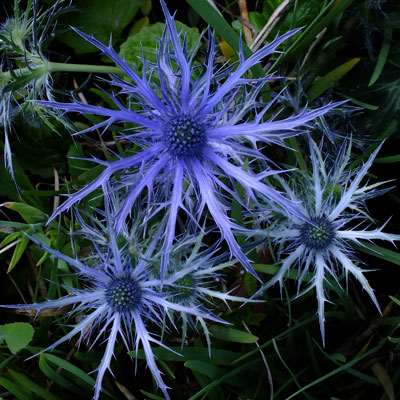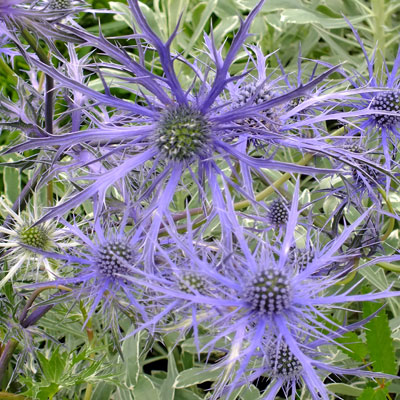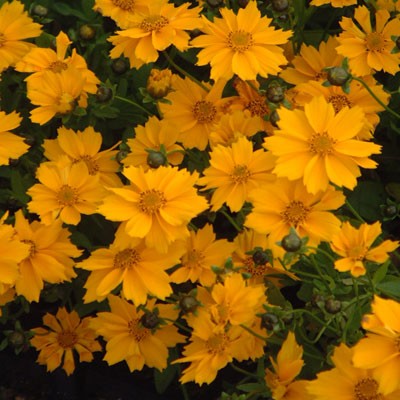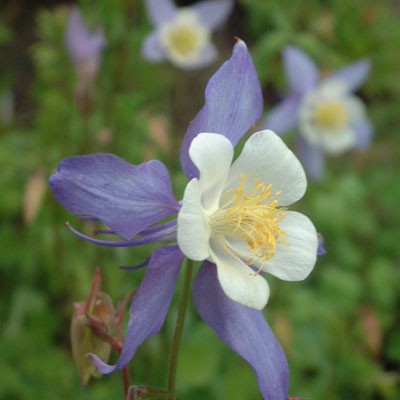Description
Eryngium ‘Pen Blue’
This is really a very fine Sea Holly indeed in more than one sense of the word. Eryngium ‘Pen Blue’ is in the x zabelii family with sea-green tripartite leaves. The flowers are borne on 60cm violet stems and are a picture of beauty. The collar is particularly wide in comparison to the central cone and its segments, radiating like the spokes of the devil’s chariot are narrow, spiky and a striking electric Blue. Further adding to the effect, the flowers are beautifully arranged and composed with the secondary flowers slightly smaller and held a little lower. Altogether a class act and a magnet for the bees. Found by Jane Edmunds in her garden in Penselwood, Somerset.
Eryngo, Sea-Holly
Like their cousins, the Astrantias, Eryngiums are members of the Umbelliferae (Apiaceae). This fact only becomes apparent on close inspection of the flowers. Each flower is in fact a composite head of many smaller flowers, with the branched umbrella like structure of most umbellifers compacted down into a central cone. One of the principle features of Eryngoes is the silvery and blue shades that the flowers take on. Flower arrangers also prize them for the excellent drying qualities of the flower heads.
As a rule the Sea Hollies all prefer a well drained root run in full sun, although some, such as Eryngium x zabellii grow perfectly well in a not too wet clay soil. They tolerate excessive lime, gravel and poor soils extremely well. In colder, wetter areas it can be beneficial to remove dead foliage from the crown prior to the winter to avoid crown rot.
Eryngium is large genus of around 200 species, many of which are garden worthy plants.
One member of the Eryngium genus, the British native Eryngium maritimum has a long history of medicinal and culinary use. The part used was the roots and the Arabs considered them an excellent restorative. They used to be sold candided in London markets and were probably the ‘kissing comfits’ referred to by Falstaff in ‘The Merry Wives of Windsor’ – ‘Let the sky rain potatoes;..hail kissing comfits, and snow eryngoes..’ The popularity in Britain of eryngo root peaked in the 18th century.
Derivation
The latin name Eryngium possibly derives from the Greek ‘eruggarein’ – to eructate. This is a reference to the use of the plant to alleviate flatulent disorders. An alternative derivation may be that it is a diminutive of the word ‘errungos’, the beard of a goat. As another possibility, if you prefer, it may be from ‘eryingion’ a name used by Theophrastus.
Plutarch relates the following story which may provide a connection:- ‘they report of the sea holly, if one goat taketh it into her mouth, it causes her first to stand still and afterwards the whole flock, until such time as the shepherd takes it from her.’
Links




























































Reviews
There are no reviews yet.